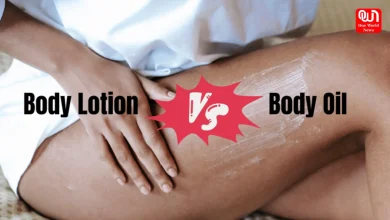Ear Hygiene: Safely Clean Your Ears With These Tips
Ear hygiene is an essential aspect of personal care, but many people are unaware of the proper methods for cleaning their ears. While it’s important to maintain cleanliness, improper ear cleaning techniques can lead to complications and damage to the delicate structures of the ear. In this article, we’ll discuss how to safely clean your ears and highlight what you should absolutely avoid doing to prevent any harm.
Safely Clean Your Ears with these tips!
- Understanding the Ear’s Self-Cleaning Mechanism: The ear is designed to clean itself naturally through a process called cerumen or earwax production. Earwax acts as a protective barrier, trapping dirt, dust, and other foreign particles to prevent them from reaching the inner ear. Additionally, the movement of the jaw during activities like chewing helps to naturally push out excess earwax. Therefore, in most cases, the ear does not require manual cleaning.
- Safe Methods for Ear Cleaning: a. Gentle Outer Ear Cleaning: Use a soft cloth or tissue to gently wipe the outer ear and earlobe. Avoid inserting anything into the ear canal to prevent pushing wax deeper or causing injury. b. Warm Water Rinse: If you feel the need to clean your ears, a warm water rinse can be effective. Use a bulb syringe to gently flush lukewarm water into the ear canal while tilting your head to the side. Allow the water to drain out naturally. c. Over-the-Counter Ear Drops: Commercially available ear drops can help soften earwax, making it easier to remove naturally. Follow the instructions provided and avoid using cotton swabs or other objects to remove softened wax.
- What Not to Do When Cleaning Your Ears: a. Avoid Cotton Swabs: Despite being a common tool for ear cleaning, cotton swabs can actually push earwax deeper into the ear canal, leading to blockages and potential damage to the eardrum. b. Say No to Objects: Never insert objects like hairpins, bobby pins, or pen caps into your ears to remove wax. These items can cause injury, puncture the eardrum, or push wax further into the ear canal. c. Skip Ear Candling: Ear candling, a practice where a hollow candle is inserted into the ear and lit, is not recommended as it can cause burns, ear canal obstruction, and even puncture the eardrum. There is no scientific evidence to support its effectiveness in removing earwax.
- Signs of Earwax Buildup or Impaction: If you experience symptoms such as earache, ear fullness, hearing loss, ringing in the ears (tinnitus), or dizziness, it may indicate earwax buildup or impaction. In such cases, it’s essential to seek professional medical assistance from an audiologist or ENT specialist.
Proper ear care involves understanding the ear’s self-cleaning mechanism and adopting safe cleaning practices. While it’s natural to want clean ears, it’s equally important to avoid risky behaviors that can lead to injury or complications. By following the guidelines outlined in this article and knowing what not to do, you can maintain ear hygiene effectively and safeguard your ear health for years to come. If you experience any concerning symptoms or have questions about ear cleaning, don’t hesitate to consult a healthcare professional for guidance and support.
Like this post?
Register at One World News to never miss out on videos, celeb interviews, and best reads.









